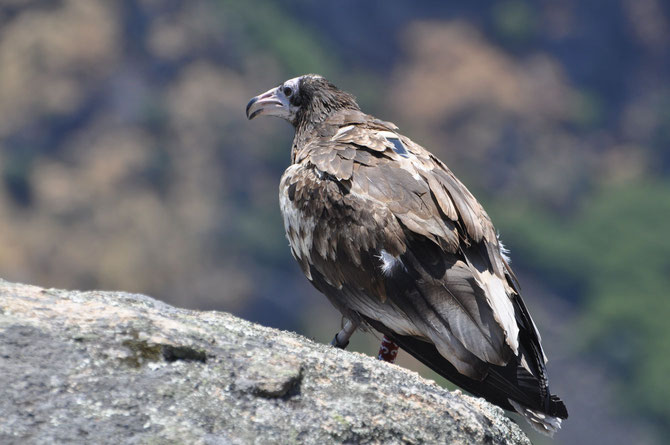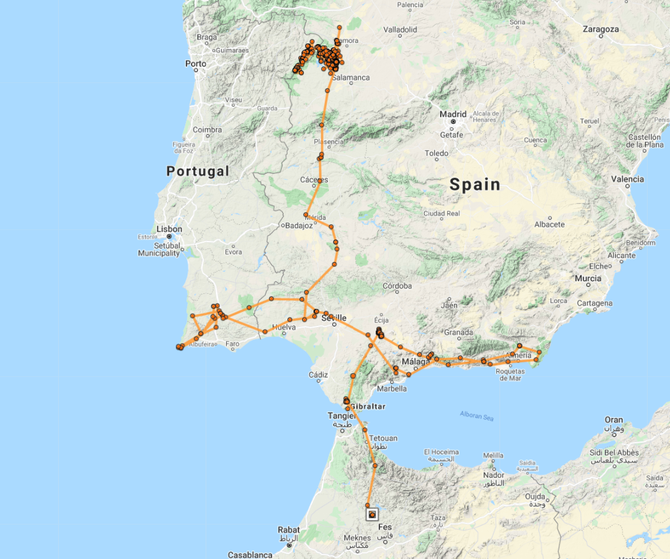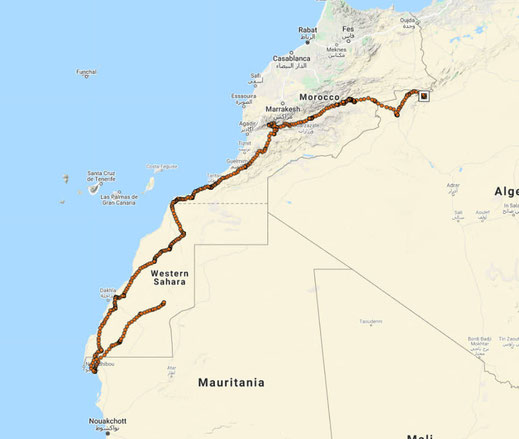
The Egyptian Vulture Fangueiro keeps surprising us with its movements. At first, we were worried that the bird would survive in the wild for long due to its problematic past, let alone migrate to Africa, but it defied all odds and successfully carried out its first autumn migration! Now, just after spending only two months in Africa, Fangueiro crossed the Strait of Gibraltar once again and returned to Iberia, which is not typical behaviour of its species. Where will Fangueiro go to next?
Rescue, rehabilitation and release

Found weak at Fão, Portugal, and with problematic feathers after experiencing severe hunger in the nest, Fanguiero was rescued in autumn of 2019 and spent almost a year in a rehabilitation centre. There, it underwent several operations and treatments to grow healthy feathers while also getting new ones through feather transplants. Thanks to the efforts of the Instituto da Conservação da Natureza e das Florestas, Universidade de Trás-os-Montes e Alto Douro (UTAD), CIARA rehabilitation centre, Sociedade Portuguesa para o Estudo das Aves (SPEA) and the Vulture Conservation Foundation (VCF), Fangueiro made a full recovery, was tagged with a GPS-tag and was released on 13 July 2020 at the Douro within the LIFE Rupis project.
Successful migration to Africa

The project team has been closely following this young Egyptian Vulture’s movements to see how it was adapting in the wild. Following its release, Fangueiro has been exploring Douro’s surrounding areas in the summer months, adapting very well to the natural environment and effectively developing its food exploration capabilities. It then started heading south on 7 October 2020, suggesting the start of its first migration. By that time, other Egyptian Vultures that the VCF monitors have already reached their wintering grounds in Africa. After spending some time in the south of Spain, on Monday, 26 October, Fangueiro revisited Tarifa. In this place, many migrating birds from West Europe congregate before crossing the sea to reach Africa. Fangueiro then finally found a suitable spot and started crossing the Strait of Gibraltar, finishing this challenging trip in a mere 20 minutes. Once the vulture reached Morroco, it didn’t really rest but rather continued heading south.
Unusual movements begin

Fangueiro pursued a more west route south compared to its conspecifics. This might have been due to eastern winds, which were not so prominent earlier in the season. Instead of heading south, Fangueiro flew southwest and ended up at the most northwestern part of Mauritania at the coast on 8 November. Without taking a day to rest, it suddenly turned around and flew north instead of turning south-east. First crossing Morocco and heading into Algeria early December where for the first time it rested in an area for more than a day or two. The team at the VCF was closely tracking its movements to see whether Fangueiro would continue north and return to Europe way earlier than expected.
Fanguerio returns to Europe
Then, at the end of December, just before the new year, Fangueiro crossed the Strait of Gibraltar once again. The return of Fangueiro to Europe at this time is quite unusual. Young Egyptian Vultures usually stay in Africa for at least 18 months (often longer) before returning to their natal origins in Europe in the spring, and starting their annual cycle of migration to Africa in the autumn and back to Europe in the spring. After five or six years they reach sexual maturity and try to establish their own territory and form a breeding pair, often not far from where they hatched themselves. Where will Fangueiro go to next? Will he join the Egyptian Vultures that overwinter in Extremadura, where the largest known wintering population of the species in mainland Europe exists? We are eagerly waiting to see what this incredible bird does next!
To stay tuned with Fangueiro’s movements, make sure you follow us on Facebook and Twitter.












